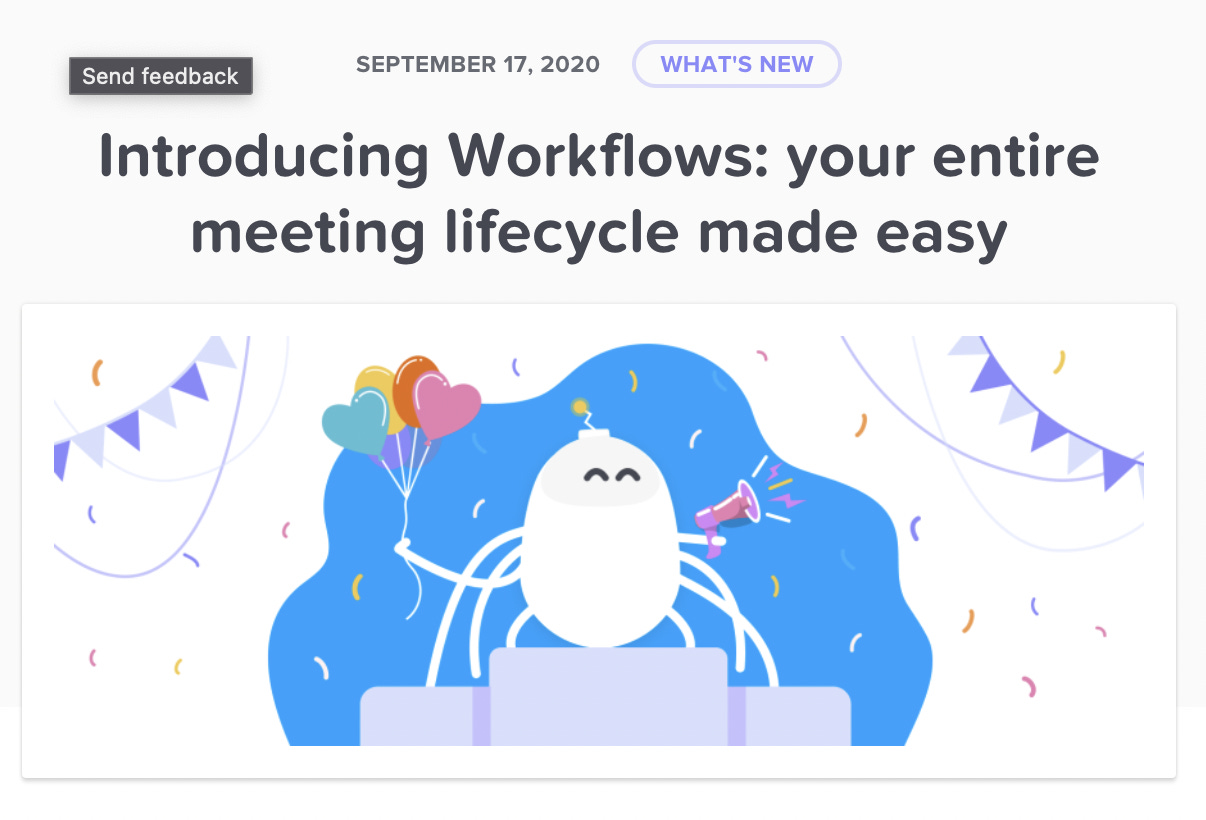What's 🔥 in Enterprise IT/VC #218
Predictions: enterprise remains 🔥 in 2021, 🦄 anywhere, SaaS collaboration + dev 1st product to embedded workflow, everyone is a 🌱 investor, SRE is the new DevOps, security continues to go dev first
Happy 2021 to all and glad we could get 2020 over with. Let’s brace ourselves for a bit more pain until we can resume back to a hybrid world. Speaking of, I believe 2021 will continue to be 🔥 for enterprise, albeit not at the same pace and the famous “2 months in 2 years” that Satya from Microsoft discussed, but the ☁️ is here to stay and more 💰 continues to be raised for enterprise startups. Case in point 👇🏼 which also plays into themes from last week’s newsletter on the “race to be first”


For those that don’t know, Daniel Loeb is one of the most successful activist hedge fund investors with over $17 billion under management and his interest, according to the FT, will be towards enterprise and cyber security.
Mr Loeb hinted at his ambitions in an October letter to investors, writing that advancements in artificial intelligence and the “digital enterprise” had created opportunities “to pursue with dedicated capital”.
And now here’s my predictions for 2021 which I shared on Medium on December 30!
What’s 🔥 in Enterprise 2021
As mentioned above, 2020 only accelerated many of the themes we’ve been excited about at boldstart for the last 10 years. While we can’t wait to see many of you again in person, it’s pretty clear that 2020 has made a permanent change in how startups and corporates view remote work and distributed teams. Expect 2021 to be the beginning of a new era where remote-only and in-person work are seamlessly blended based on function and job to be done. What this means is we will see continued investment in any tech that supports fully remote teams, collaboration built into all apps, and more ️️cloud all the time. Products that have immediate time to value and gotomarket models that are based on product led growth will continue to garner the lions share of capital as these selling motions are built for this partially remote world with lower $ entry points and less decision makers needed to close.
So here are my predictions for 2021 (notice some overlap with last year’s predictions).
1/ 🦄 can be built from anywhere: Once again, this is a trend that was started pre-2020 and only accelerated this past year. With distributed teams becoming more accepted along with Zoom-only rounds, expect a continued uptick in startup financings anywhere. Case in point, our latest investment was in Colombia (yes, the 🇨🇴) and others made in 2020 included Dublin, London, Tel Aviv, and Paris.
From last year’s prediction:
Acceleration of Fully/Partially Distributed teams with an international flair: The cost of living in the Bay Area and NYC is prohibitive for many. Given that it is harder to scale engineering teams in SF and NYC and that the tools to collaborate and work are getting better and better (see 2 above), we are seeing more and more companies founded with a remote HQ or fully distributed team on day one. Once upon a time, VCs cringed at the idea of distributed teams, and now it’s seen as a huge positive. In addition, Tier 1 financing risk is all but eliminated as VCs from the west coast are increasingly comfortable not only leading Series A rounds in Europe but also seed as well.
2/ 2021 will be first year that a large scale M&A of a fully distributed team happens: We’ve always ❤️ distributed teams and see the power of talent everywhere. If anything good has come out of 2020, I hope that large acquirers will be more amenable to buying fully distributed teams. We sold a company last year and one of the closing conditions was 90% of the core team had to relocate. With many of the larger companies having gone fully remote permanently or more accepting of it, 2021 will be the first year this happens and thankfully so.
3/ If collaboration first was the SaaS theme of last year’s newsletter, workflow is 2021’s theme: (from last year’s predictions).
SaaS 3.0, design first…and collaborative: The consumerization of enterprise has finally come with a focus on beautiful, intuitive, easy to use software, i.e. design first. Companies like Superhuman (a portfolio co), AirTable, Figma, Front and Cycle (both portfolio cos) have led this resurgence and excitement for the SaaS application stack. With the nature of distributed work and teams, design first and usability also means that collaboration has to be built into the workflow from day one; natively with real-time updates, sharing, commenting and more. This collaboration first thinking is a must have for most applications in 2020 and beyond.
With so many point products in the market gaining market share and with switching costs quite low, the name of the game for many well funded SaaS productivity startups is to create stickiness by embedding themselves in a user’s workflow and business processes. Examples include companies like Calendly which has done an amazing job going from single player, point product for scheduling to multi-player embedding in workflows for scheduling sales meetings, interviews for HR, and more. Expect every SaaS startup once it reaches some critical mass to execute on this model.
Along those lines, expect to see massive consolidation as many of the players who have built vibrant user bases can also expand TAM through acquisitions to support sky high valuations. Public companies will also take advantage of their multiples and the M&A market will be on 🔥 as companies like Box, Zoom, Dropbox, RingCentral, and Cisco evolve from best of breed applications to full product suites to continue to take on Microsoft and Google.
4/From developer first to embedded workflow: And there you have it again, the word “workflow”. Product led growth only works when a product is designed to make a user of one a superhero. Same goes for developer first companies and the trick is to know how to embed easy invites and interactions so a user can easily share with their team. From there, the journey from user of one to small dev team and organization begins. Given the number of developer first and open source companies that are all funded with a fair amount of capital, this means that not every company will succeed in making this journey from individual to team workflow. For enterprises, finding that balance between speed, developer empowerment and self service capabilities versus centralized policies and governance will be an ongoing battle in 2021, especially as we live in a hybrid working world. One project to keep an eye on is Backstage (from Spotify) which is an open source platform for building developer portals and Clutch (from Lyft) which is similar in vein.
Other areas that will be 🔥 include infrastructure as code automation with companies like Env0 (a portfolio co) and git-like version control from companies like Optic which is Git for APIs.
5/Cross functional apps and not just a system of record for one department: What Figma got right is that design is not just for product designers but it’s a team sport and should be easily used and accessible by everyone. We are seeing this in trend in more and more SaaS startups like Dooly which is a Superhuman-like note taking interface for Salesforce but more importantly all revenue facing functions and Cycle (a portfolio co) which is doing this for product centric teams from executives to product to engineering to presales…and not just for PMs.
Read Medium for the other 5 predictions (and please comment there on what you think).
🙏🏼 for being a reader and wishing for a healthy, meaningful, and prosperous 2021 to you and yours.
Scaling Startups
Reminder, great startups can be built anywhere and VCs don’t know 💩
 1 year ago today, one of the most well known VCs told me: "The odds of you creating a $10B startup outside SF is virtually impossible. If you're serious about startups, you need to move to the Bay Area" Lol. Well, I'm glad those days are officially behind us.
1 year ago today, one of the most well known VCs told me: "The odds of you creating a $10B startup outside SF is virtually impossible. If you're serious about startups, you need to move to the Bay Area" Lol. Well, I'm glad those days are officially behind us.👇🏼🤣
When to go upmarket - there is no one playbook, must read 🧵
While not an enterprise tech startup, I admire how the founders of Sir Kensington started an offbeat, premium brand in the commodity ketchup space and innovated into other condiments eventually selling for $140mm - 10 lessons learned in their journey
Develop your storytelling abilities. This will amplify everything you and your company want to say.
Humans are emotional creatures who have, over time, gained the capacity for logic. Stories create emotional stakes and enrollment and can unlock a sense of purpose. Storytelling is crucial to present a compelling vision everyone can get behind, and to make employees and customers feel a part of something bigger than themselves. No matter what business you’re in, you are in the human energy business. Take every opportunity to practice storytelling and encourage your team to step into their natural talents here.
Enterprise Tech
Must read 🧵 from Hemant Mohapatra from Lightspeed on why GCP was first and could have won ☁️ wars but didn’t
👇🏼 💯 Still a massive problem and gap no matter how great the ☁️ providers have been, read 🧵
Go is 13 years old and great overview on why Go could be the language of the future, Go, Docker, Terraform, Kubernetes, Prometheus are built in Go for example
Over time new complex systems were built on top of these foundational systems/libraries and languages. People too often don’t think of the hidden costs of complexity. The truth is that code is read many more times than it is written. Team velocity is significantly burdened by complexity. In contrast, Go is simple. It takes an afternoon to learn. The code is very straightforward and readable. This simplicity empowers teams to collaborate in ways never before possible.
💰 spending to move to ☁️ will continue in the Fortune 500, refactoring and lift and shifting legacy apps is next and will take years, from CIO Dean Del Vecchio at Guardian Life
Important note for what’s ahead in nation state cybersecurity and for the US, from Paul Kolbe, ex-CIA directorate of operations oversees. Expect even bigger hacks than Solar Winds in 2021 and beyond
Unlike nuclear weapons, or even sophisticated conventional arms, powerful cyberweapons are cheap to produce, proliferate with alarming speed and have no regard for borders. Unable to match the United States in military spending, Russia, China, Iran and even North Korea view cybertools as a great equalizer. Why? Because the United States is singularly vulnerable to cyberattack: America is more reliant on financial, commercial and government networks than our adversaries, and, at the same time, our systems are frighteningly open and vulnerable to attack. American networks represent targets for our adversaries that are simply too soft, juicy and valuable to resist.
Some holiday 😃
Markets
Alex Clayton from Meritech Capital sums up the year in enterprise tech IPOs and it was 🔥, here’s a bar chart showing initial market cap vs YE close
Land and expand, product led growth is the way 💪🏼
















